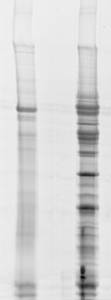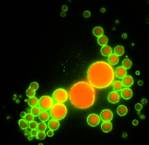
The laboratory conducts pioneering research investigating the biochemistry and cell biology of lipid droplets. Lipid droplets are dynamic organelles that are found in nearly all mammalian cells, and serve a particularly vital function in adipocytes where they hold the body's major energy reserves as triacylglycerols. Obesity is characterized by the excessive storage of triacylglycerols in adipocytes, and is a growing global health problem leading to increased prevalence of diabetes and cardiovascular disease in the human population. Despite a need for therapeutic options to control obesity, little is known about the intracellular mechanisms that regulate fat storage and release in adipocytes.

We are particularly interested in the role that structural lipid droplet-associated proteins within the PAT (perilipin, adipophilin, TIP47) family of proteins play in forming an organizing scaffold that regulates the access of lipid metabolic enzymes to stored neutral lipids. Perilipins are a family of polyphosphorylated proteins coating the surfaces of lipid droplets in adipocytes and steroidogenic cells of the adrenal gland, testes, and ovaries. In adipocytes, perilipins are required to maintain fat stores by controlling the rates of triacylglycerol turnover and release. Adipophilin (also called ADRP) and TIP47 are structurally related to perilipins, but are found on lipid droplets in many cell types throughout the body. A major project in the laboratory uses approaches of biochemistry and molecular and cellular biology to investigate the structural basis for perilipin function in controlling lipid droplet morphology and triacylglycerol storage and hydrolysis.
Recent studies from our laboratory and others have shown that lipid droplets have a unique and dynamic protein composition (Figure 1). The identification of novel lipid droplet-associated proteins using proteomics technologies suggests that lipid droplets comprise a metabolically active pool of lipids that is used as a source of substrates for the production of energy, signaling molecules, and structural materials for membrane synthesis and repair.
Using proteomics, we have identified CGI-58 as a major component of adipocyte lipid droplets (Figure 2). Mutations in CGI-58 are responsible for a rare inherited neutral lipid storage disorder in humans, suggesting that CGI-58 plays a critical role in triacylglycerol metabolism. A second major project in the laboratory uses a variety of technologies including in vitro studies of recombinant proteins, RNAi approaches in cultured mammalian cells, and the characterization of transgenic mice to investigate the function of CGI-58 in triacylglycerol metabolism.

Finally, we are interested in further identification of novel lipid droplet-associated proteins and in studying the functions of these proteins.


